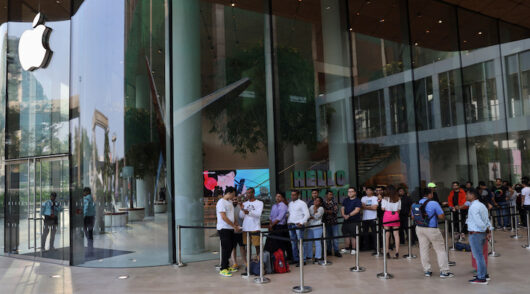Apparel manufacturer and retailer VF Corporation is to relocate all of its regional back-end operations out of Hong Kong as part of what it terms a ‘regional transformation plan’.
And one analyst has told Inside Retail Asia to expect similar moves from more multinational companies in the territory, both inside the retail industry and beyond.
Commencing in April, US-listed VF Corp will move the centre of brand operations from Hong Kong to Shanghai, where it already has a staff of around 900 office and retail workers.
VF’s Asia Product Supply Hub, the regional base of operations for its global supply chain, will be moved to Singapore and a new shared services centre for the region will be opened in Kuala Lumpur, Malaysia
Announcing the move in a statement Monday, VF did not address why it was walking away from Hong Kong as a business hub – although it did state there would be no impact on retail stores in the territory. Instead it portrayed the move as a commitment to invest in its business across the region and support its ambition to become “a more consumer-minded, retail-centric and hyper-digital enterprise,” in the words of Steve Rendle, chairman, president and CEO.
“We established our presence in Asia 25 years ago and have continually shaped our business around the region’s many evolving opportunities. Now, we’re further transforming our Asia operations so we can better serve this fast-moving, technology-driven market with increased speed and capabilities,” he said.
VF Corporation operates a portfolio of outdoor, active and workwear brands including Vans, The North Face, Timberland and Dickies.
By choosing Shanghai as its brands’ centre of operations, VF would “forge stronger and more relevant relationships with Chinese consumers,” the statement said. Moving the product supply hub to Singapore would “enable greater integration across VF’s global supply-chain network, which also includes key hubs in Europe and the Americas”.
The company said it planned to redeploy some of its product supply staff and other resources throughout its primary sourcing countries in Asia to work more closely with key suppliers, thus fostering greater efficiency.
“We’ve made great strides in recent years to advance our brand strategy in Asia with new capabilities in digital and analytics, stronger relationships with the region’s digital titans, and the appointment of new VF leaders in both Tokyo and Shanghai,” said Foster.
“As we build on this strong foundation, we also see significant opportunities in creating a hyper-digital supply chain with a key hub in Singapore that will enable us to unlock greater speed and agility in how we make, source and move our products around the world.”
Meanwhile, the new Kuala Lumpur shared services centre will house functions including digital technology, finance, human resources, and logistics.
‘Definitely a trend’
Pascal Martin, partner at OC&C Strategy Consultants, confirmed to Inside Retail “it is definitely a trend” for retailers to shift their management operations out of Hong Kong. He is aware of other companies within and outside the retail sector planning similar moves.
He said the balance of sales and profitability between Hong Kong and Mainland China has “shifted dramatically” in favour of the mainland, something that began even before the advent of the social unrest in Hong Kong in 2019 and the subsequent Covid-19 crisis.
“China – as the only market still driving growth – has become so important for multinational corporations that they want to be in direct interaction with the market. They don’t want or need a regional layer in between.”
Pull factors to the mainland include that living conditions had improved for expatriate management and that business overheads such as the cost of office rent – not to mention retail space – was cheaper.
“It’s easier to get cost synergies by combining regional operations with a bigger local entity like China,” said Martin.
Adidas moved its Asian regional HQ from Hong Kong to the mainland several years ago, but recently separated regional activities from China, relocating them to Singapore.
“Another luxury group I work with decided to take China out of the Asia region and have it report directly to HQ in Europe. At that point, it makes less sense to have the other Asia markets run from Hong Kong, so they created a South Asia regional HQ in Singapore.
“This is something I have observed quite frequently. Once you take China out of the ‘region’, you don’t need to have it located in Hong Kong. When the regional layer is in Hong Kong, then it has to go.”






